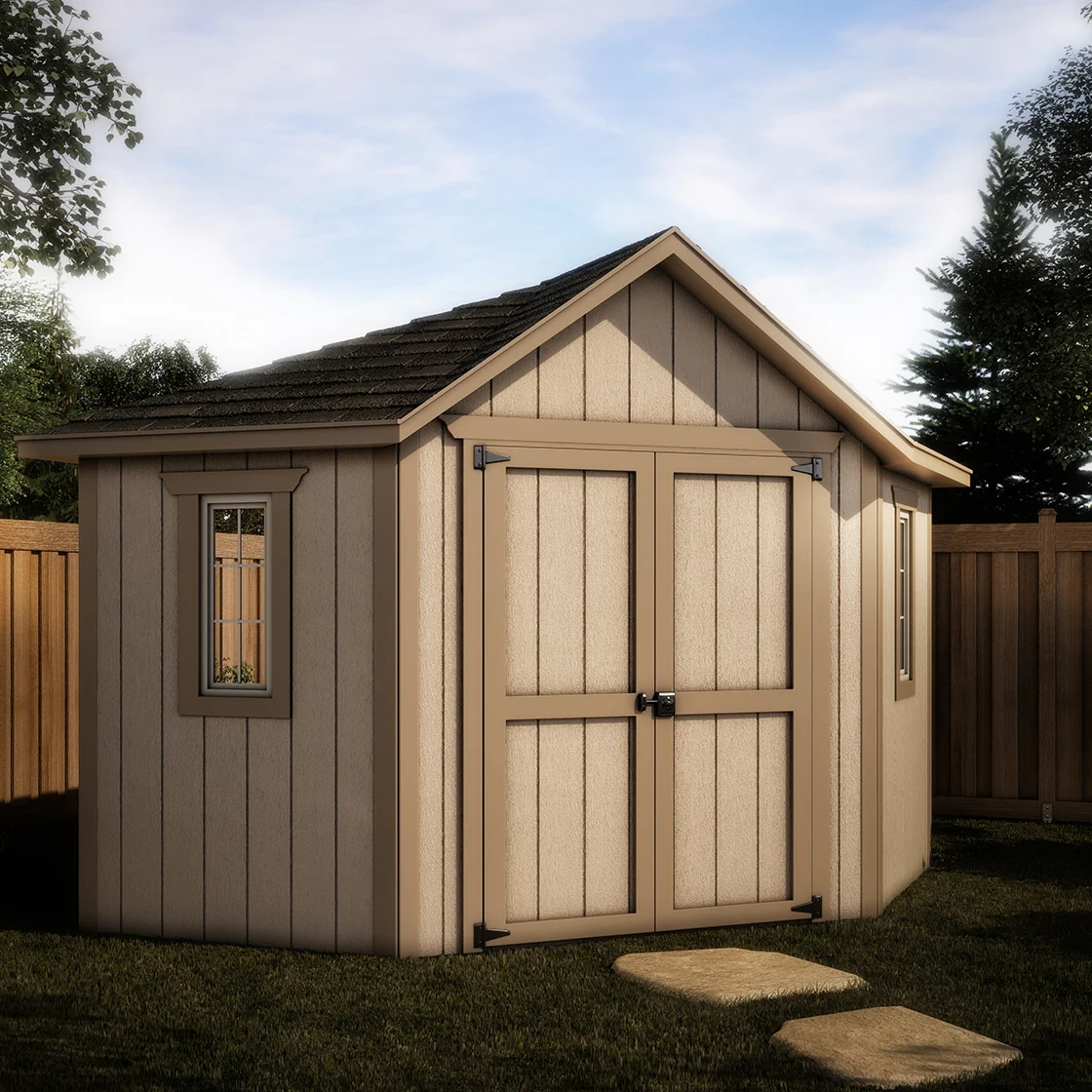
Practical Outdoor Storage Solution: Basic Shed Plans for Enhanced Organization
Efficient outdoor storage is crucial for maintaining a tidy and functional property. Whether dealing with gardening tools, seasonal equipment, or recreational gear, a well-designed storage solution significantly improves convenience and protects valuable items from the elements. This article outlines basic shed plans, focusing on practicality, cost-effectiveness, and ease of construction for the average homeowner. The plans presented prioritize fundamental building techniques, allowing for customization based on individual needs and available resources.
I. Planning and Design Considerations
Before commencing construction, meticulous planning is essential to ensure the shed meets specific requirements and integrates seamlessly into the landscape. Key considerations include:
A. Shed Dimensions and Functionality
Determine the necessary size based on the intended storage capacity. A smaller shed (e.g., 6ft x 4ft) suffices for limited tools and equipment, while larger sheds (e.g., 8ft x 10ft or larger) accommodate more extensive collections. Consider the dimensions of the largest items to be stored to ensure adequate internal space. Careful measurement of the designated area is crucial to avoid space conflicts with existing structures or landscaping.
B. Location and Site Preparation
Choosing the right location is paramount. Factors to consider include proximity to the area where the stored items will be used, accessibility, and sun exposure. Avoid placing the shed in low-lying areas prone to flooding. Leveling the ground is critical for a stable foundation. This might involve excavation and compaction, ensuring a solid base to prevent settling and potential structural damage.
C. Material Selection
The choice of materials significantly impacts the shed’s durability, cost, and aesthetic appeal. Pressure-treated lumber is a common and cost-effective option offering resistance to rot and insect infestation. Cedar and redwood offer natural rot resistance but are more expensive. Plywood or OSB (Oriented Strand Board) can be used for sheathing and roofing. Consider the longevity and maintenance requirements of each material when making a decision.
D. Building Codes and Permits
Check local building codes and regulations before beginning construction. Some jurisdictions require permits for shed construction, especially those exceeding a certain size or complexity. Understanding local regulations prevents potential issues and ensures compliance with safety standards.
II. Basic Shed Construction: Step-by-Step Guide
This section details the fundamental steps involved in building a simple, rectangular shed. Advanced features such as windows, doors, and lofts can be added based on individual requirements and construction skills.
A. Foundation Construction
A robust foundation is essential for shed stability. A simple concrete slab is ideal, offering durability and level support. Alternatively, a compacted gravel base with treated lumber sleepers can provide a cost-effective solution. Ensure the foundation is level and properly sized to support the shed’s weight.
B. Frame Construction
The frame provides the primary structural support. Use pressure-treated lumber for the floor joists, wall studs, and roof rafters. Construct the floor frame first, ensuring squareness and levelness. Then, erect the wall frames, ensuring proper alignment and bracing. The roof frame is typically constructed using rafters supported by ridge boards and wall plates. Appropriate bracing is crucial for structural integrity.
C. Sheathing and Roofing
Once the frame is complete, apply sheathing to the walls and roof. Plywood or OSB sheets are commonly used. Ensure proper overlapping and secure fastening. Apply roofing felt or underlayment before installing the chosen roofing material, such as asphalt shingles, metal roofing, or corrugated plastic sheets. Proper flashing around chimneys or other penetrations is crucial to prevent water leakage.
D. Siding and Trim
Install the chosen siding material, whether it's wood, vinyl, or metal. Ensure proper overlapping and secure fastening. Add trim around windows, doors, and edges for a finished aesthetic. Careful attention to detail enhances the shed's appearance and protects it from the elements.
E. Door and Window Installation
Install the chosen door and windows, ensuring proper sealing to prevent drafts and moisture penetration. Use appropriate weatherstripping to enhance energy efficiency and protect against the elements. Consider the security features of the chosen door and window options.
F. Finishing Touches
Once the main structure is complete, add finishing touches such as painting or staining the exterior, installing shelving and storage solutions inside, and adding any desired hardware. A coat of protective sealant or paint enhances durability and extends the shed's lifespan.
III. Customization and Enhancements
The basic shed plan can be easily customized to meet specific needs. Consider these enhancements:
By carefully considering these factors and employing sound construction techniques, homeowners can create a practical and durable outdoor storage solution that enhances both functionality and aesthetic appeal. Remember that safety should always be a priority throughout the entire construction process. If uncertain about any aspect of the project, seeking professional guidance is recommended.







No comments:
Post a Comment
Note: Only a member of this blog may post a comment.